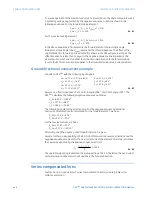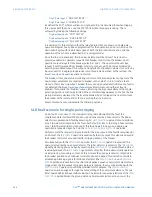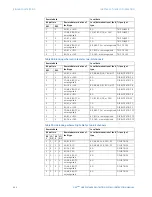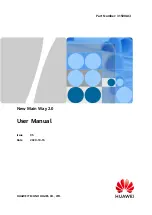
CHAPTER 15: THEORY OF OPERATION
SERIES COMPENSATED LINES
D90
PLUS
LINE DISTANCE PROTECTION SYSTEM – INSTRUCTION MANUAL
649
Voltage or current inversion may lead to false direction discrimination by directional
elements. This may potentially include both a failure to operate on a forward in-zone fault
as well as misoperation on a reverse fault. Both distance and overcurrent directional
elements can be affected.
Series-capacitors and their overvoltage protection equipment (air gaps and/or metal-
oxide varistors) have a steady-state overreaching effect on the apparent impedance seen
by the relay - a forward fault may appear much closer to the relay as compared with the
actual fault location. The apparent impedance may be shifted towards the relay by as
much as the total reactance of the series capacitors placed between the potential source
of the relay and the fault point. This extreme steady-state overreach happens during low-
current faults when the air-gaps do not flashover or the MOVs do not conduct any
significant current.
In addition to the above steady-state overreach effect, sub-synchronous oscillations in
both currents and voltages may cause significant transient overreach.
Memory polarized directional comparators
Distance protection elements of the D90
Plus
deal with the problem of voltage inversion by
using 100% memory polarized directional comparators. As the memory duration is set
longer that the slowest fault clearing time for reverse faults, it is guaranteed that the
distance element would not pick-up on reverse faults should the voltage inversion happen.
At the same time, it is guaranteed that the distance elements would pick-up for all forward
faults regardless of any voltage inversion as long as the memory voltage is used. Before
the memory expires the relay would respond to any fault on the protected line. Stepped
distance backup zones operate after the memory voltage expires. But the backup
protection responds to distant faults that do not cause any inversion of the positive-
sequence voltage. As a result, the time-delayed stepped-distance zones are guaranteed to
operate.
Distance protection elements of the D90
Plus
deal with the problem of current inversion by
using a multi-input comparator approach. Should the current inversion happen, the
distance elements are secure on reverse faults because multiple conditions involving fault-
loop, negative-sequence, and zero-sequence currents and the memory voltage are
checked prior to declaring a forward fault.
On close-in forward faults beyond the series capacitors as seen from the relaying point,
the current inversion phenomenon may take place for a short period of time. The condition
cannot sustain for a long time as very high fault currents would occur causing large
voltage drops across the series capacitors and prompting the overvoltage protection of
the capacitors to operate quickly. This would effectively remove the series compensation
and eliminate the current inversion. However, when the currents used by distance
comparator (fault-loop current for ground and phase distance protection, and the
negative-sequence and zero-sequence currents for ground elements) stay shifted by more
than 90° from their natural fault position determined by the user as the element
characteristic angle, the distance elements may fail to pick-up on such a forward fault for
the brief period of current inversion. This is an inherent attribute of the 100% memory
polarized mho element, and not a weakness particular to the D90
Plus
.
Therefore, for dependability, it is recommended to use high-set phase overcurrent
protection for direct tripping on close-in faults potentially causing current inversion, and
overreaching ground fault directional overcurrent functions (such as negative-sequence,
ground or neutral) for communication-aided schemes.













































